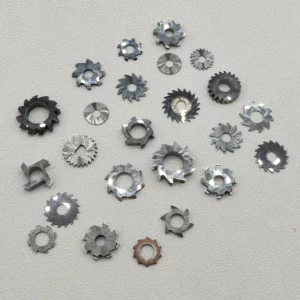Table of Contents
ToggleCarbide Tooth Saw Blade
When it comes to woodworking and construction, selecting the appropriate tools is crucial for achieving quality results. One of the most essential tools in any carpenter’s kit is the carbide tooth saw blade. Understanding how to choose the right one for your specific cutting needs can significantly improve both the efficiency and quality of your projects.
Understanding Carbide Tooth Saw Blades
Carbide tooth saw blades are distinguished by their teeth, which are tipped with carbide—a very hard material known for its durability. This feature allows the blades to cut through tough materials with ease, making them an excellent choice for a diverse range of applications. Whether you are working with hardwood, softwood, or engineered wood, a carbide tooth saw blade can provide the precision and longevity necessary for great results.
Different Types of Carbide Tooth Saw Blades
Selecting the right carbide tooth saw blade begins with understanding the various types available. For instance, table saw blades differ from circular saw blades, each designed for specific tasks. A table saw blade, with larger teeth and a more rigid construction, is ideal for straight cuts in thick materials. Conversely, a circular saw blade is designed for more mobility and versatility, making it suitable for both crosscutting and ripping tasks.
Example: Crosscut vs. Rip Blades
If you are undertaking a woodworking project that requires both crosscutting and ripping, you might be considering what type of carbide tooth saw blade best suits such a need. Crosscut blades are designed with more teeth, allowing for smoother, more refined cuts across the grain of the wood. In contrast, rip blades have fewer, larger teeth designed to cut along the grain. For instance, if you plan to cut a long plank into smaller sections, a rip blade would provide the most efficiency. However, if you then want to finish those sections with a smoother edge, switching to a crosscut blade will yield the best results.
Size and Diameter Matter
The size of the carbide tooth saw blade you choose should also be considered carefully. Blades come in various diameters, typically ranging from 6 inches to 12 inches or more. When purchasing a blade, ensure it is compatible with your saw. For example, a 10-inch blade is commonly used in table saws and can handle most standard cuts. If you are working with large sheets of plywood or thicker lumber, a larger diameter blade will not only cut through the material more effectively but will also provide a cleaner finished surface.
Tooth Count and Configuration
Another critical factor to keep in mind is tooth count. The number of teeth on a carbide tooth saw blade influences both the cut quality and speed. Blades with more teeth (often 40 to 80) tend to produce smoother finishes, making them ideal for cutting plywood or hardwoods. On the other hand, blades with fewer teeth (around 24 to 30) are designed for faster cuts, perfect for ripping lumber quickly.
Example: Choosing Based on Material
For instance, if you are creating cabinets from hardwood, a blade with a higher tooth count will provide the clean, precise cuts you need for joints and edges. In contrast, if you are framing a house and primarily working with softwood, a lower tooth count will help you complete the job more quickly without sacrificing too much cut quality.
Material Compatibility
Carbide tooth saw blades are not all created equal. Some are designed to cut specific materials more effectively than others. For example, if you are dealing with composite materials such as MDF or certain plastics, look for blades that feature a special tooth geometry designed for those materials. Choosing a blade aligned with the material you’re working with will enhance performance and minimize wear on the blade itself.
Maintenance and Longevity
A significant advantage of the carbide tooth saw blade is its longevity. However, maintaining these blades is essential for maximizing their lifespan. Regular cleaning, sharpening, and proper storage can make a considerable difference. For example, materials built with resin or adhesives can cause buildup on the teeth; a solution is to clean the blade with a suitable solvent after every few uses. In this way, you can maintain its cutting performance over time without having to replace it frequently.
Budget Considerations
Lastly, your budget will play a crucial role in your decision-making process when it comes to carbide tooth saw blades. While it may be tempting to choose the lowest-priced option available, investing in a reputable brand known for quality can pay off in the long run. A high-quality carbide tooth saw blade may cost more upfront, but its durability and performance can save you from frequent replacements and poor cutting results.
Conclusion
Choosing the right carbide tooth saw blade is vital for any cutting project. Understanding the various types, sizes, tooth counts, and material compatibilities can guide you in the selection process. Remember that investing in a high-quality blade not only enhances your cutting efficiency but also contributes to smoother and more precise results. By taking the time to assess your specific cutting needs, you can be assured that your projects will yield the quality results you desire. Ultimately, the right carbide tooth saw blade will not only simplify your tasks but also inspire creativity in your woodworking endeavors.
Now equipped with this knowledge, what type of carbide tooth saw blade will you be adding to your toolkit? Investing in the right blade may open new doors in your projects and elevate your craftsmanship to a new level.

